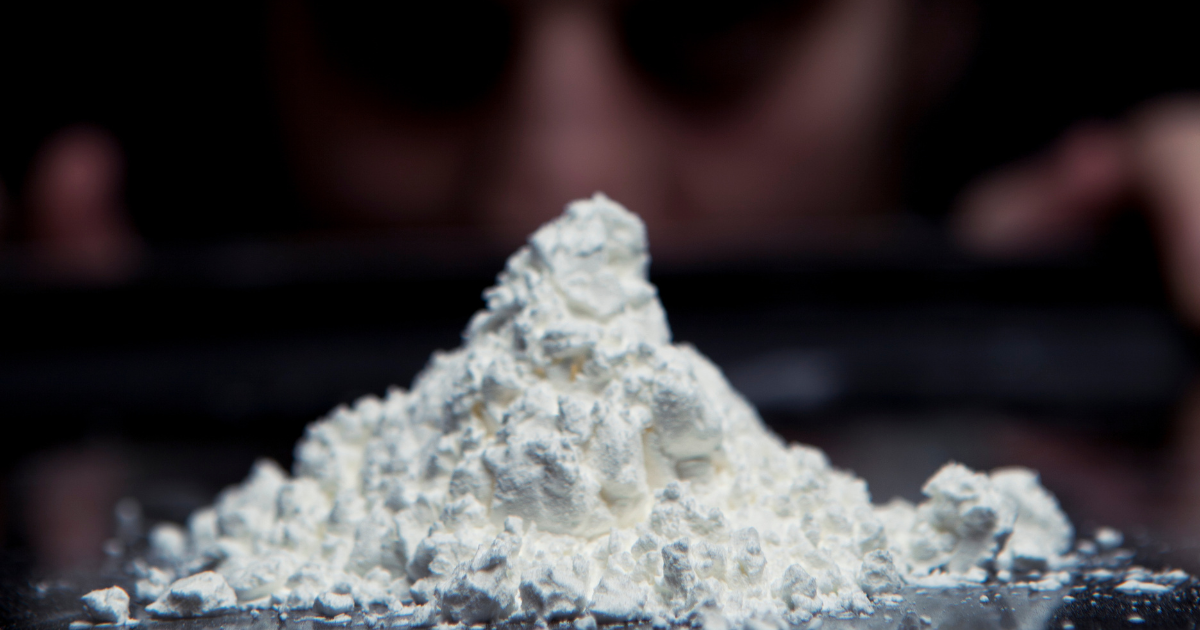Cocaine is a powerful and illegal stimulant derived from the coca plant. Cocaine has been used for centuries in various cultures and is now often found in a powdered form, which can be snorted, injected, or smoked as crack cocaine. Classified as a Schedule II drug under the Controlled Substances Act, the stimulant is known for its euphoria-inducing effects.
Cocaine as a Stimulant
Cocaine is indeed a central nervous system stimulant, not a depressant. Its stimulating effects include:
- Increased Energy and Alertness: Cocaine triggers a surge of energy, enabling users to feel more awake, active, and often overconfident.
- Heightened Mood: It sharpens focus and attention, creating a temporary sense of happiness.
- Rapid Heart Rate and Blood Pressure: Cocaine’s stimulant effect poses significant health risks, especially to the heart.
- Decreased Appetite: Its stimulating nature often leads to a reduced appetite.
These effects are short-lived and often followed by a severe crash, leading to fatigue and depression.
Types and Forms
Cocaine is found in several different forms, each with its unique appearance, method of consumption, and effects on individuals. Understanding these differences is crucial for both users and healthcare professionals dealing with addiction.
Powdered Cocaine
- Appearance: Fine, white powder.
- Method of Consumption: Usually snorted, but can also be dissolved and injected.
- Effects: Powdered cocaine provides a rapid but short-lived high, inducing feelings of euphoria, alertness, and increased energy. The effects typically last 15 to 30 minutes.
Crack Cocaine
- Appearance: White or off-white, rock-like substance.
- Method of Consumption: Typically smoked, allowing it to reach the brain more quickly.
- Effects: Crack cocaine produces a more intense but even shorter high than powdered cocaine, often lasting only 5 to 10 minutes. This leads to a more severe crash and an increased likelihood of addiction.
Freebase Cocaine
- Appearance: White crystalline substance.
- Method of Consumption: Smoked.
- Effects: Freebase cocaine is purer than crack cocaine and creates a rapid, intense high. It is highly dangerous due to its potency and the risks associated with smoking.
The differences in effects among these types stem from variations in purity, method of consumption, and rate of absorption into the bloodstream. While all forms of cocaine are highly addictive and pose serious health risks, the more intense and rapid highs associated with crack and freebase cocaine can lead to a more pronounced addiction risk.
Symptoms of Cocaine Addiction
Recognizing the signs and symptoms of cocaine addiction can be the first step toward seeking help and pursuing recovery. Here are some of the common symptoms:
Physical Symptoms
- Frequent nosebleeds (from snorting).
- Weight loss and malnutrition.
- Insomnia and erratic sleep patterns.
- Increased heart rate and blood pressure.
Behavioral Symptoms
- Increased aggression or irritability.
- Paranoia and anxiety.
- Financial troubles due to compulsive spending.
- Social withdrawal and neglecting responsibilities.
Psychological Symptoms
- Intense cravings.
- Inability to stop or control usage despite negative consequences.
- Loss of interest in previously enjoyed activities.
- Mood swings, depression, and suicidal thoughts.
The Dangers of Cocaine Use
The stimulating properties make it highly addictive, and chronic use can result in severe health issues, including:
- Physical Health Problems: Heart disease, stroke, and respiratory failure are common among long-term users. Withdrawal issues can make recovery difficult.
- Mental Health Challenges: Chronic use can lead to anxiety, paranoia, and other mental health disorders.
- Social and Legal Consequences: Cocaine use also impacts families, friends, communities, and may lead to legal troubles.
The risk of overdose is significant and can be fatal.
Flavor Flav’s Cocaine Recovery Story
Part-time Las Vegas resident and former Public Enemy hype man, Flavor Flav (real name William Jonathan Drayton, Jr.), has publicly struggled with addiction, achieving recovery from cocaine and crack for over eight years, and an alcohol use disorder for two years. Once spending up to $2,600 a day on cocaine, Drayton’s journey to recovery included multiple rehab stints and relapses. He moved to Los Angeles to focus on recovery, under the guidance of his bandmate Chuck D. Despite past hypocrisy, including participation in Public Enemy’s anti-drug song while using drugs, Drayton is now committed to spreading the message of recovery. His story is particularly relevant in Nevada, where cocaine use ranks among the top 10 states for adult usage.
Check out Flavor Flav’s story in our article about his recovery journey.
Finding the Path to Recovery
Recovering from addiction is challenging but attainable. It requires professional support, determination, a personalized treatment plan, and the right tools and encouragement. If you or a loved one is struggling with addiction, know that help is available and that recovery is possible.
Don’t wait; take the first step toward an addiction-free future. Call Landmark Recovery at 888-448-0302. Our compassionate team is dedicated to guiding individuals through the recovery process, providing the support and tools needed to rebuild a healthy, fulfilling life. Reach out today and embark on the path to recovery.

Choose Recovery Over Addiction
We're here 24/7 to help you get the care you need to live life on your terms, without drugs or alcohol. Talk to our recovery specialists today and learn about our integrated treatment programs.




